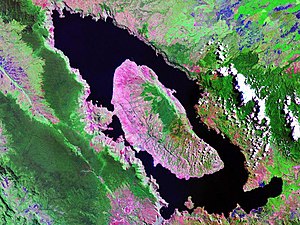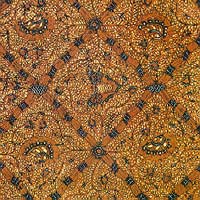INDONESIA is often referred as the sleeping giant of Southeast Asia, and the epithet was indeed appropriate. With more than 18 thousand islands, this archipelago has a remarkable diversity of what you can see or do while on vacation there.
Indonesia offers a variety of festivals that are very distinctive feature of their cultures, reflecting the ethnic diversity and traditions from various parts of the archipelago. You'll find it in various typical Indonesian festivals, for example celebration af arts, batik, dance, ceremony, etc. If possible, you can see one of the festival during a visit in Indonesia.
Krakatau Festival (Lampung, Sumatra)
Krakatau Festival is an annual festival held in Lampung, was held to celebrate the volcanic island of the same name, Krakatau (Krakatoa). Mount Krakatau erupted in 1927, then the eruption was create a new small island named Anak Krakatau.
During the festival, visitors can enjoy variety shows like Carnival Tuping (Lampung Mask Carnival), elephant and various dances from Lampung and surrounding cities. Series of events ended with a visit to the volcanic island that still active but was sleeping soundly.
Bali Arts Festival (Bali)
One of the largest annual celebration of art and culture in Indonesia, Bali Arts Festival is always full packed. During the month, various arts performances, exhibitions, and other cultural activities will take place in Bali, offering dances, musics and beauty of their cultures.
The celebration featured performances such as traditional dances that have been almost forgotten, the trail from a remote area in Bali, foods, handicrafts, as well as new creations from Dance School in Denpasar and contemporary choreography of national and international artists.
Solo Batik Carnival (Solo / Surakarta, Central Java)
From the first, Batik tradition was deeply embedded in Solo~(as known as Surakarta) and even has become an icon and identity, reflect the beauty of its Royal and hospitality of its people. Solo Batik Carnival is held to strengthen that tradition, and also to promote Batik globally.
This event is a combination of ceremonies, fashion shows, and carnivals, with Batik as theme. There is also a Bazaar that offers various kinds of batik and the unique souvenir from Solo.
Grebeg Maulud (Yogyakarta, Central Java)
In the Java language, Grebeg means crowd of people and Maulud is one of the month name in Javanese calendar. This celebration was also known as Sekaten, to celebrate the birth of the Prophet Muhammad. This procession lasted a full day and features performances of Gamelan which paraded toward the Masjid Agung (grand mosque).
Night Bazaar is held in the north of town square, right place to taste the cuisine of Java and Yogyakarta and also hunting some souvenirs.
Visit Indonesia; Know it, Love It
 Image via Wikipedia
Image via Wikipedia

















.jpg)




.jpg)
.jpg)
.jpg)

.jpg)
.jpg)
.jpg)
.jpg)
.jpg)











.jpg)







